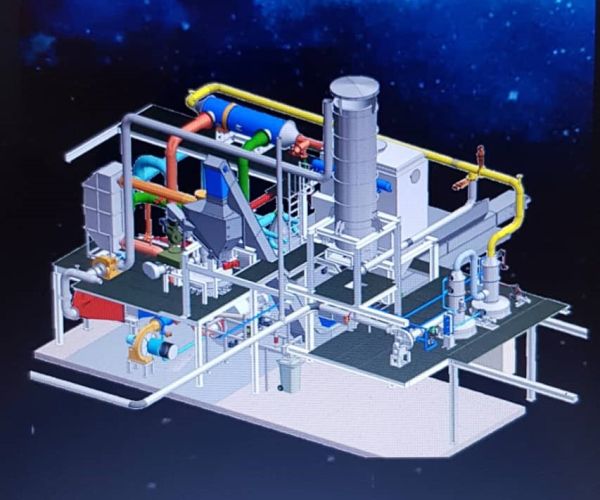Gasification
Gasification basically means sub stochiometric heating without combustion; the simplest way to add oxygen to the process is by blowing the desired amount oxygen into the gasifier, just sufficient to produce and maintain the heat in the gasifier system. The temperature needed for a proper gasification process will be well above 670 to 680 °C to assure complete conversion from the feedstock in combustible gases. The most common and affordable way of gasifying is to use air as gasification agent instead of steam or pure oxygen.
The main components produced with what is called air-blown gasification, meaning the air is used as a gasification agent, can vary significantly depending on the feedstock and the specific gasification process used; however typically syngas is 30 to 60% carbon monoxide (CO), 25 to 30% hydrogen (H2), 0 to 5% methane (CH4), 5 to 15% carbon dioxide (CO2), plus a lesser or greater amount of water vapor, smaller amounts of for instance sulfur, chlorine or ammonia, when they are present in the original feedstock.
SR2.0 is using her own Vortex reactor as already discussed here above as gasfier and therefore the feed should be composed of small particles, up to 1,5 cm . If the particles are so small the process will take only very little time to convert the solid particles into syngas and ash. So the composition and more specific the amount of ash or incombustibles in the original feed will be important to calculate the efficiency of the process.

At the same time you should consider another important feature of the feed, it will determine the composition of the gas and the ash, which in turn will determine the amount of effort the client will have to comply with local regulations. In general all unwished and difficult emissions will be taken care of in he aftertreatment of the syngas before it can be used sensible in further processing of the gas into electricity and/or heat or as a source to further conversion into chemicals , something that is still in its infancy, but will certainly be discussed in the future.
A typical lay-out of a complete gasification plant including the cleaning installation to get rid of tars etc. and an ash combustor to recover most of the energy value of the feed is shown here.